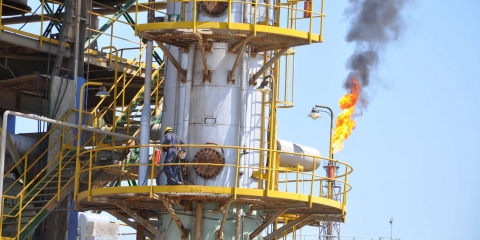How ISIS Changed the Yezidi Religion
On a recent Friday afternoon, Yezidi musicians led a procession of worshipers toward a newly rebuilt temple on a hillside in northern Iraq. Women burned incense and the congregation threw handfuls of sweets at the flute and drum players. Hundreds of local Yezidis from the town of Behzane, near Mosul, had gathered to reopen one […]Cathy Otten writes for The Atlantic:
On a recent Friday afternoon, Yezidi musicians led a procession of worshipers toward a newly rebuilt temple on a hillside in northern Iraq. Women burned incense and the congregation threw handfuls of sweets at the flute and drum players. Hundreds of local Yezidis from the town of Behzane, near Mosul, had gathered to reopen one of the temples blown up by ISIS.
“We are so excited to be back,” said a flute player, Arean Hassan. The spiraling, rhythmic music played by Yezidi musicians, known as Qawwals, had been absent from the hills of Behzane for three years under ISIS. Around the newly rebuilt temple stood the charred stumps of olive trees that ISIS had burned to the ground.
But there’s an unavoidable question at the heart of the happiness and defiance of the worshipers, who not long ago were targeted for genocide precisely because of these religious practices. How do you rehabilitate a religion that’s been singled out for such intense trauma and displacement?





